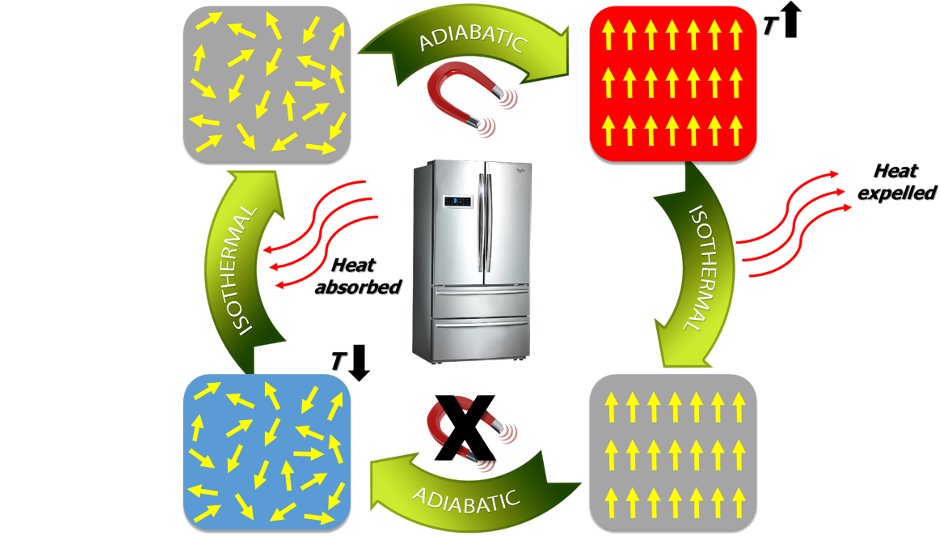
It is obvious that living cell mechanics is much more complex than that of a liquid droplet. A qualitatively similar effect-ferrofluid droplet division in a non-uniform magnetic field (B = 68 mT) with gradient, dB/dz = 6.6 Tm −1-was recently reported in 15. Considering the cell as a droplet of diamagnetic liquid placed in a non-uniform magnetic field, one can conclude that such a droplet will divide itself into several smaller drops to satisfy the minimum of the total system energy. Here, the important question is: how will the cell respond and adapt itself to a high magnetic field gradient? From point of view of physics, the answer is the following. Special interest exists in the case when the applied magnetic field dramatically changes in value and direction across the cell body. In spite of the many interesting effects related to the application of spatially non-uniform magnetic fields, a key problem-how high-gradient magnetic fields change cell machinery-has never been carefully examined. Thus, after achieving a sufficient magnetic gradient, significant changes in cell functions, shape and spatial organization might be possible. In the case of cells suspended in a weakly diamagnetic medium, the volumetric force is F ∝ ∇B 2. Indeed, the magnetic force acting on a magnetic dipole moment is proportional to the field gradient, i.e., F ∝ ∇B (where B is magnetic induction). In contrast, the exposure of cells and organisms to high-gradient magnetic fields (HGMFs) reveals many intriguing effects that might be directly related to the magnetic gradient force exerted on the whole cell and its organelles. Therefore, the differences in the diamagnetic susceptibilities of cellular components are very low, which leads to tiny effects. When analyzing effects of magnetic fields on living cells, tissue and organisms, one should keep in mind that in most cases, the biological cells and tissue are diamagnetic with susceptibility very close to that of water 14.

The early embryonic growth of the leopard frog ( Rana pipiens) was strongly inhibited by a 1 T magnetic field with a high gradient of 84 Tm −1 13. Under HGMFs, significant morphologic changes in osteoblast-like cells occurred, including expansion of the endoplasmic reticulum and mitochondria, an increased number of lysosomes, distorted microvilli, and aggregates of actin filaments 12. For example, a large-gradient magnetic field can affect FLG29.1 cell differentiation to form osteoclast-like cells 11. Nevertheless, namely spatially non-uniform magnetic fields with a large enough gradient are capable of significantly altering cell functions and even organisms. Relatively few studies have quantified magnetic gradient actions at the intracellular level. However, the biological effects related to the gradient of the magnetic fields are poorly discussed.

The scientific literature is filled with thousands of works on the responses of living organisms to low, moderate and strong magnetic fields, for review see 4, 5, 6, 7, 8, 9, 10. Extensive progress in experimental techniques and the design of new magnetic materials has resulted in the burgeoning development of new approaches to reveal the targets of magnetic fields on the intracellular and molecular levels 1, 2, 3. In recent decades, the interaction of magnetic fields with living cells and organisms has captivated the interest of a broad scientific community drawn from a wide spectrum of disciplines, including biology, physics, chemistry, medicine and nanotechnologies.

By deriving a generalized form for the Nernst equation, we find that a relatively small magnetic field (approximately 1 T) with a large gradient (up to 1 GT/m) can significantly change the membrane potential of the cell and thus have a significant impact on not only the properties and biological functionality of cells but also cell fate. We present a theoretical framework towards a fundamental understanding of the effects of HGMFs on intracellular processes, highlighting new directions for the study of living cell machinery: changing the probability of ion-channel on/off switching events by membrane magneto-mechanical stress, suppression of cell growth by magnetic pressure, magnetically induced cell division and cell reprograming, and forced migration of membrane receptor proteins.

The biological effects of high-gradient magnetic fields (HGMFs) have steadily gained the increased attention of researchers from different disciplines, such as cell biology, cell therapy, targeted stem cell delivery and nanomedicine.


 0 kommentar(er)
0 kommentar(er)
